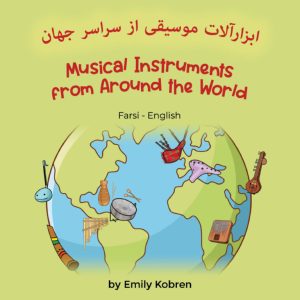
Music, similar to sports, has the unique ability to transcend language barriers and connect people from different cultures and backgrounds. Music can influence how people think and feel and has been a part of our culture since the beginning of time. Let’s take a look at one of the instruments that was invented thousands of years ago and is still in use today!
History
The didgeridoo is an ancient woodwind instrument from the Indigenous Australian culture with a distinct and mesmerizing sound. While the precise origins of the didgeridoo are uncertain, it is widely believed to have been created by Indigenous Australians, the Aboriginal people, thousands of years ago. Aboriginal legend traces the creation of the didgeridoo back to the Dreamtime, a sacred period in Aboriginal mythology.
Construction
Initially, the didgeridoo was crafted from either bamboo or the branches of eucalyptus trees hollowed out by termites, which left behind a natural tube-like structure. Today, didgeridoos can be constructed from various woods and materials like plastic, metal, or even fiberglass. While the length of the instrument can vary, they are typically 4 to 5 feet long.
The outside of the didgeridoo can be painted with basic designs, have very intricate patterns and images, or retain their natural wood grain design with little to no decoration. (To learn more about the Aboriginal didgeridoo designs, click here.)
Playing Techniques
The basic technique for playing the didgeridoo involves vibrating the lips and producing a continuous drone sound by blowing into one end of the instrument. Circular breathing, where the player inhales through the nose while simultaneously exhaling through the mouth, allows for uninterrupted sound production. This technique creates a mesmerizing rhythm that can vary through tongue and vocal techniques.
Cultural Significance
The didgeridoo holds immense cultural significance within Indigenous Australian communities. It is often seen as a sacred instrument used in ceremonies, storytelling, and as a way to connect with ancestors. The deep, resonant sounds produced by the didgeridoo are believed to imitate the sounds of the natural world, such as animal calls and the wind rustling through trees. It is also used for healing purposes and meditation.
Global Popularity
The didgeridoo has gained substantial popularity outside Indigenous Australian communities in recent decades. It has found its way into contemporary music, fusion genres, meditation, and wellness practices. Its distinct sound adds a unique texture to various musical genres, making it a sought-after instrument for musicians worldwide.
“I think music in itself is healing. It’s an explosive expression of humanity. It’s something we are all touched by. No matter what culture we’re from, everyone loves music.” – Billy Joel
Learn More

Check out Musical Instruments from Around the World to learn more about unusual and fun instruments from diverse cultures and locations. Part of the Language Lizard Explore collection, it is available in both English and 16 bilingual editions (more languages coming soon!) This multicultural book includes free lesson plans, extension activities, and audio. The book will appeal to all ages, especially older language learners.
